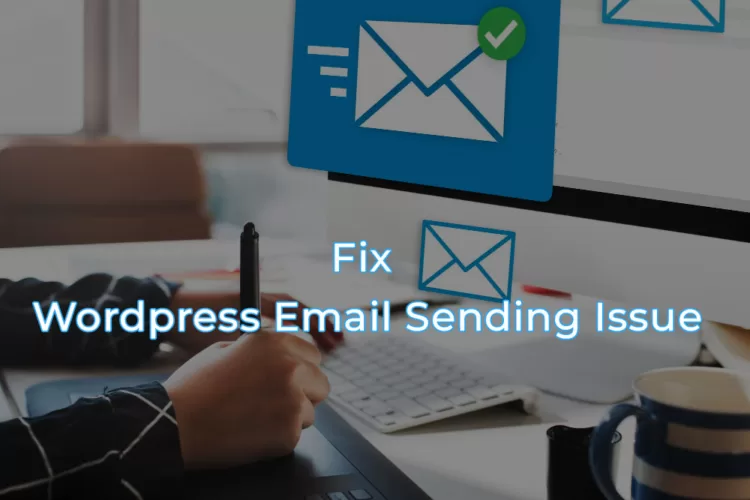
Regular website maintenance is critical for small businesses aiming to retain a secure, swift, and fully functional online presence. Aspects like content management, implementing security updates, and performance optimization are key to ensuring your site remains a vibrant platform for user engagement. Neglecting such regular updates and checks can result in a website that’s slow and riddled with bugs, adversely affecting your site’s search engine optimization (SEO) and stunting business growth. Significantly, a well-maintained website secures a positive user experience and is pivotal in acquiring new leads and customers.
Optimize Website Speed
Optimizing website speed is paramount for enhancing user experience and improving search engine rankings. Here are actionable strategies to achieve optimal website performance:
Content Delivery & Optimization:
- Optimize images by compressing them and using the correct file format, significantly reducing load times.
- Save regularly used files on users’ devices by browser caching, and speeding up site visits.
- Minify CSS, JavaScript, and files to decrease their size and enhance load times.
- Scale down the size of files sent from your server using Gzip compression, making them quicker to load.
- Use asynchronous loading for CSS and JavaScript.
- Use Content Delivery Network (CDN) to cut down latency and speed up the site.
Reducing Load and Improving Speed:
- Limit the number of plugins and third-party scripts to minimize HTTP requests.
- Regularly monitor and analyze site performance using tools like Google PageSpeed Insights to check for betterment.
- Consider using a performance-focused hosting provider that can handle your site’s traffic and data processing efficiently.
- Implement AMP (Accelerated Mobile Pages) for faster mobile loading times, enhancing the mobile user experience.
- Utilize a performance budget to set limits on file sizes and loading times, ensuring your site remains fast and responsive.
Continuous Testing and Optimization:
- Continuously test and optimize site performance, focusing on metrics like Largest Contentful Paint (LCP), Time to Byte (TBT), and Cumulative Layout Shift (CLS) to ensure a smooth user experience.
- GTmetrix offers an excellent speed testing tool that allows users to view site performance at any given time and offers additional performance monitoring options.
- Tools like BrowserStack SpeedLab can be used to verify website speed across different devices and browsers, ensuring consistent performance.
- Compressing images with tools like Kraken.io can significantly reduce file size, aiding in faster-downloading speed.
Regularly Update Your Content
To maintain a dynamic and engaging website, it’s essential to regularly update your content. This practice not only keeps your site relevant but also significantly boosts its visibility on search engines. Here’s how to approach content updating effectively:
Content Republishing:
- Choose an Old Blog Post: Identify a post that’s a few years old but still holds relevance or has performed well in the past.
- Update with Fresh Information: Refresh the content by incorporating new facts, statistics, images, and any relevant information that enhances the post’s value.
- Republishing Process: After updating, change the publish date to the current time you wish the post to go live. It’s crucial not to alter the URL to preserve its ranking and social share counts.
SEO and User Experience Optimization:
- Keyword Integration: Ensure that relevant keywords are seamlessly woven throughout the headings, content, title tags, and meta descriptions to improve SEO.
- Multimedia Elements: Incorporate photos, graphics, and videos to make the content more engaging and break up text-heavy sections, thus enhancing user experience.
- Content Audit: Regularly perform audits to identify outdated articles, redundancies, and opportunities for optimization to maintain high-quality, helpful information on your site.
Monitoring and Updating:
- Regular Checks: Set a weekly or monthly schedule to monitor your website’s rankings and update the content’s SEO as needed. Use tools like Ahrefs or Google Search Console for precise tracking.
- Content Optimization Software: Utilize software such as Clearscope to keep tabs on SEO scores and make informed updates to your content.
- Design Updates: Keep your website’s design modern and in line with current trends like bold typefaces, bright colors, and minimalism to ensure it doesn’t appear outdated.
Implement Strong Security Measures
Implementing strong security measures is predominant in safeguarding your website against cyber threats and ensuring a secure user experience. Here are essential strategies every small business should employ:
Regular Security Checks and Updates:
- Conduct regular scans for security vulnerabilities to identify and mitigate risks promptly.
- Stay updated with your web hosting service’s latest security features and ensure your site benefits from these enhancements.
- Regularly update and patch your website’s software, including the CMS, plugins, and themes, and apply security patches to protect against vulnerabilities.
Data Protection and Access Control:
- Install an SSL certificate to encrypt user data, ensuring secure data transmission.
- Implement strong password policies, advocating for passwords with high length and complexity, coupled with multi-factor authentication (MFA) to enhance access security.
- Limit administrative privileges, change default settings, and use advanced endpoint protection software to maintain a tight grip on who has access to what within your website’s backend.
Mobile Responsiveness
Ensuring mobile responsiveness is a critical aspect of website maintenance that directly impacts user experience, search engine rankings, and overall web performance.
Design and Layout:
- Responsive Web Design: Employ fluid grid layouts that adjust to the screen size of the device being used, making your website accessible and navigable on any device.
- Create a touch-friendly interface: Ensure that buttons and links are easy to use on touchscreens by making them large enough to tap with a thumb and spacing out links to prevent mis-clicks.
- Optimal Typography and Readable Font: Use a font size of at least pixels for desktop versions, which may need to be adjusted for mobile screens to enhance readability.
Technical Considerations:
- Avoid Adobe Flash: Opt for HTML for multimedia elements as it is supported across all mobile devices, unlike Flash.
- Minimize Pop-Ups: These can be intrusive and difficult to close on mobile screens, potentially harming the user experience.
- Viewport Meta Tag: Including <meta name=”viewport” content=”width=device-width, initial-scale=”> in the HTML head section ensures your layout is fluid and responsive.
Performance and Accessibility:
- Optimize Images and Media: Ensure media files are optimized for quick loading without sacrificing quality.
- Regular Mobile Testing: Use tools like Google’s Mobile-Friendly Test to regularly check the mobile responsiveness of your website and make necessary adjustments.
- Implement a Mobile-First Design: Prioritize mobile design principles from the start, focusing on performance optimization, fluid grid systems, and responsive navigation.
Perform Regular Backups
Performing regular backups is a critical aspect of safeguards against data loss from various threats, including cyber-attacks, human errors, and problematic app integrations. Given, are key practices and considerations for effective website backup strategies:
Backup Frequency and Content:
- E-commerce Sites: Due to constant updates, e-commerce websites require daily backups at a minimum to capture all changes in appearance, content, and transactions.
- Active Websites: For sites with frequent updates, real-time backups are ideal to ensure every change is immediately secured.
- Backup Content: A comprehensive backup should include all website data such as HTML, CSS, JavaScript files, databases, user profiles, products, themes, categories, customer data, orders, pages, blog posts, inventory, and multimedia content like images, videos, and documents.
Storage and Recovery:
- Strategy: Maintain at least three copies of your website data in two different formats, with one stored offsite, preferably in cloud-based storage for easy access and recovery.
- Offsite and Cloud-Based Storage: Utilizing offsite, especially cloud storage, offers the flexibility to access backups from anywhere, ensuring quick restoration to minimize downtime and potential revenue loss.
- Regular Testing: It’s crucial to regularly test the backup restoration process to ensure that data can be quickly and accurately restored when needed, maintaining business operations and preserving customer trust.
Best Practices:
- Regular Updates and Security: Secure backup files and access credentials to protect against unauthorized access.
- Disaster Recovery Plan: Having a disaster recovery plan in place, alongside regular backups, prepares businesses for quick action in the event of data loss, minimizing the impact on operations.
- Tailored Backup Strategy: Choose a backup strategy that aligns with your website’s unique needs, considering factors like website size, complexity, and activity level. This tailored approach ensures that all critical data is protected, and the business can quickly recover from any incident.
Monitor Website Performance and Analytics

Monitoring website performance and analytics is a multifaceted approach that encompasses various aspects of website maintenance, from technical support to content management and security measures. Here are essential components and tools for effective website performance monitoring:
Key Performance Indicators (KPIs) and Metrics
- SEO Performance: Track keyword rankings to measure SEO effectiveness, adjusting strategies as needed for improved visibility.
- User Engagement: Monitor traffic trends, bounce rates, and engagement metrics to inform necessary changes for optimizing user experience.
- Competitive Analysis: Analyze top competitors and the top results for target keywords to identify areas for improvement and differentiation.
Popular Analytics and Monitoring Tools
- Google Analytics: Offers both free and paid versions, providing insights into user behavior, site traffic, demographics, and more. Essential for understanding performance and customer behavior.
- Crazy Egg: Focuses on usability testing with features like heatmaps, A/B testing, and recordings to track how visitors interact with your website.
- Monsido: Provides a website health checker that scans the first pages of a domain, offering an overview of core aspects impacting user experience.
- Mixpanel: Specializes in monitoring customer experience without seat limits, ideal for businesses focused on detailed user engagement analysis.
Implementation and Analysis
- Regular Reviews: Conduct regular analyses of site analytics to identify possible issues earlier.
- Performance Testing: Utilize tools like GTmetrix and Pingdom for testing website performance, speed, and accessibility, ensuring optimal user experience.
- Security and Network Monitoring: Employ security monitoring software to identify vulnerabilities and network monitoring to check behind-the-scenes components like servers and firewalls.
Search and Fix Broken Links
Acknowledging SEO issues such as duplicate content, website speed, and particularly broken links is important. Broken links, also known as dead links or errors, occur when a hyperlink points to a webpage that no longer exists or has been moved without proper redirection. These can significantly hamper the user experience, leading to frustration and potentially driving visitors away.
Identifying Broken Links
- Google Analytics: Set up a filter for page titles containing ” to find broken links.
- Xenu: A free tool that scans your website for broken links. Ensure to uncheck “check external links” for internal link focus.
- Google Search Console: The ‘Crawl Errors’ report shows all pages that returned an error to Google, helping identify broken links.
- Semrush Site Audit: Finds broken internal links under “Errors” and external links under “Warnings”.
- SEOmoz and Google Webmaster Tools (GWT): Both bring inclusive details on broken links. GWT, in particular, offers a step-by-step guide to finding broken links through its “Crawl Errors” section.
Fixing Broken Links
- Internal Links: Update the link, test it, and then update the sitemap to ensure it reflects the current structure of your site.
- External Links: Check for accuracy, replace with an active link, or remove if no suitable replacement is found.
- Backlinks: If broken links are found in backlinks, contact the referring domain’s webmaster to update the link.
- Redirects: Implementing redirects is crucial when the URL of a page has changed, guiding visitors and search engines to the new destination.
Maintenance and Prevention
- Regular Checks: Utilize tools like Semrush’s Site Audit to run daily or weekly checks for broken links.
- Competitor Analysis: Identify competitors’ broken backlinks and suggest your page as a replacement to gain additional traffic and improve SEO.
- Broken Link Check Tool: Recommended for finding broken links, providing details such as link text, URL where the broken link is located, and the type of broken link.
- Scheduled Audits: It’s advised to check for broken links every month or quarter, depending on the frequency of content updates, to ensure a seamless browsing experience and maintain SEO rankings.
Keep SEO Practices Updated
To keep SEO practices updated, small businesses must prioritize a comprehensive approach that includes keyword optimization, on-page element refinement, and continuous monitoring of SEO trends.
Keyword and On-Page Optimization:
- Conduct thorough keyword research to identify high-value keywords that target your audience effectively.
- Optimize key on-page elements such as titles, meta descriptions, headers, and internal links with the targeted keywords for improved search visibility.
Local SEO and Online Reputation Management:
- Regularly monitor and update your business’s local listings to ensure information is consistent and accurate across platforms, enhancing local search visibility.
- Actively encourage customer reviews and engage with them by responding promptly. This not only improves your online reputation but also signals to search engines that your business values customer feedback.
Continuous SEO Education and Best Practices:
- Stay up-to-date on the latest Google algorithm updates and adjust your SEO strategies accordingly to maintain or improve your search rankings.
- Adhere to WordPress and web development best practices specifically tailored for SEO.
- Regular testing and troubleshooting are crucial to ensure the website is functioning optimally, providing a good user experience, which in turn supports SEO efforts.
- Tools such as Monsido can be invaluable in identifying SEO issues and optimization opportunities, offering insights to refine your strategy.
Through this comprehensive exploration of essential website maintenance practices, small businesses can grasp the significance of dedicating time and resources to ensure their digital storefront remains secure, engaging, and responsive. From the foundational importance of regular content updates and optimization for speed to the critical necessity of implementing strong security measures and ensuring mobile responsiveness, each aspect contributes significantly to a site’s overall performance and user experience.
As we conclude, small businesses need to recognize that website maintenance is not a one-off task but a continuous effort that demands diligence, adaptation, and foresight. The implications of these practices extend far beyond the immediate technical enhancements; they play a crucial role in sustaining business growth, building customer trust, and carving out a competitive edge in the digital landscape.


